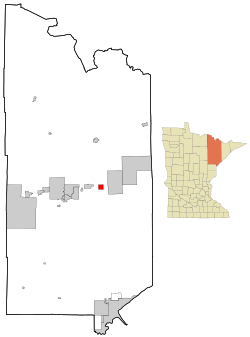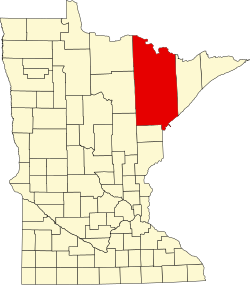2010 census
As of the census [10] of 2010, there were 1,682 people, 777 households, and 438 families living in the city. The population density was 449.7 inhabitants per square mile (173.6/km2). There were 887 housing units at an average density of 237.2 per square mile (91.6/km2). The racial makeup of the city was 98.2% White, 0.2% African American, 0.5% Native American, 0.1% Asian, and 1.0% from two or more races. Hispanic or Latino of any race were 0.5% of the population.
There were 777 households, of which 24.1% had children under the age of 18 living with them, 41.3% were married couples living together, 11.2% had a female householder with no husband present, 3.9% had a male householder with no wife present, and 43.6% were non-families. 37.8% of all households were made up of individuals, and 18.1% had someone living alone who was 65 years of age or older. The average household size was 2.09 and the average family size was 2.70.
The median age in the city was 48.4 years. 19.3% of residents were under the age of 18; 6.7% were between the ages of 18 and 24; 20.2% were from 25 to 44; 29.5% were from 45 to 64; and 24.4% were 65 years of age or older. The gender makeup of the city was 48.9% male and 51.1% female.
2000 census
As of the census of 2000, there were 1,850 people, 812 households, and 495 families living in the city. The population density was 487.4 inhabitants per square mile (188.2/km2). There were 893 housing units at an average density of 235.3 per square mile (90.8/km2). The racial makeup of the city was 98.38% White, 0.05% African American, 0.43% Native American, 0.38% Asian, 0.05% from other races, and 0.70% from two or more races. Hispanic or Latino of any race were 0.32% of the population. 17.4% were of Finnish, 13.2% German, 10.5% Norwegian, 9.1% Slovene, 7.3% Swedish, 6.6% Italian and 5.4% English ancestry according to Census 2000.
There were 812 households, out of which 22.2% had children under the age of 18 living with them, 48.6% were married couples living together, 8.4% had a female householder with no husband present, and 39.0% were non-families. 34.6% of all households were made up of individuals, and 17.4% had someone living alone who was 65 years of age or older. The average household size was 2.19 and the average family size was 2.79.
In the city, the population was spread out, with 19.8% under the age of 18, 7.2% from 18 to 24, 22.6% from 25 to 44, 26.4% from 45 to 64, and 23.9% who were 65 years of age or older. The median age was 45 years. For every 100 females, there were 95.6 males. For every 100 females age 18 and over, there were 93.4 males.
The median income for a household in the city was $32,094, and the median income for a family was $43,095. Males had a median income of $41,413 versus $20,625 for females. The per capita income for the city was $17,442. About 8.5% of families and 11.9% of the population were below the poverty line, including 26.0% of those under age 18 and 4.7% of those age 65 or over.




